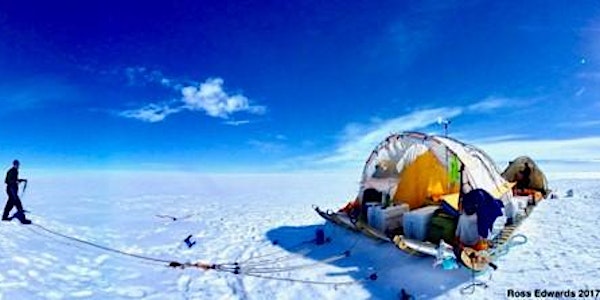
Research Week: Greening of Science: Perspectives from an environmental journey across the Greenland ice sheet on a wind-solar powered sled
Date and time
Location
Curtin HIVE
John Curtin Gallery - Building 200A Kent Street Bentley, WA 6102 AustraliaDescription
Presented By:
Ross Edwards
Abstract:
The Earth system as we have known it is rapidly reorganising in response to human induced changes in large-scale biogeochemical cycles and climate. Scientists studying these changes increasingly face moral dilemmas in regards to the environmental impact of their research. In response, an increasing number of researchers are working to green their science. Greening field work in the extreme conditions of the Arctic has proven to be especially challenging. During 2017, Curtin researcher Ross Edwards embarked on an ambitious project to traverse the Greenland ice sheet taking environmental samples from, a zero emission, wind propelled, solar powered sled system. The Inuit WindSled. During the ~1200 km traverse, Edwards collected surface samples of black carbon nanoparticles deposited on the ice sheet from fires and fossil fuel combustion. In this presentation, Edwards will share a personal account of the expedition and his thoughts on the greening of science. During the expedition 360-degree stills and video were captured and these will be displayed in the HIVE.
About the Presenter:
Associate Professor Ross Edwards is an ultra-trace scientist with Curtin University Physics and Astronomy investigating the present and past history of smoke and other aerosols in the atmosphere. These particles change the properties of the atmosphere influencing climate, atmospheric chemistry, and the health of the biosphere. His expertise ranges from the analysis of polar ice-cores by high resolution inductively coupled plasma mass spectrometry to the ultra-trace analysis of black carbon nanoparticles (soot). As an inventor, he has pioneered new analytical methods and created equipment that has allowed the continuous analysis of ice cores at the parts per quadrillion level and the ultra-trace analysis of soot in water.
Organised by
About Curtin HIVE
The Curtin HIVE is an advanced facility established by Curtin University to serve the growing demands of researchers and industry for visualisation, virtualisation and simulation capabilities in Western Australia. The Curtin HIVE enables a new and improved capability in the interpretation, presentation and communication of research data. Learn more at https://hive.curtin.edu.au/